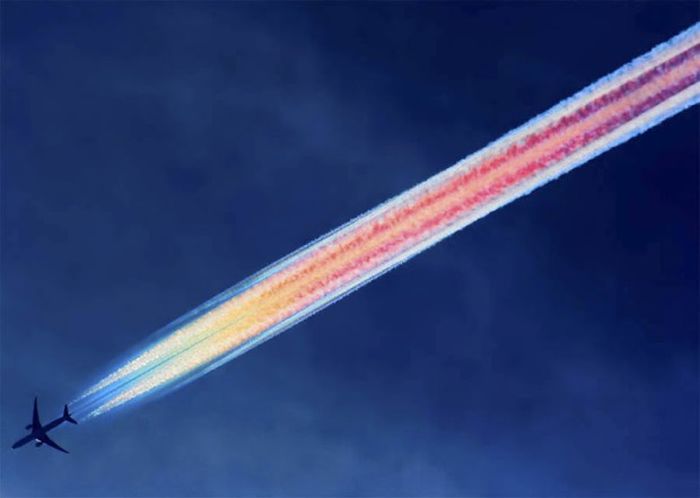|
|
Contrails, Condensation Vapour Trails
|
Contrails and climate
Contrails, by affecting the Earth's radiation balance, act as a radiative forcing. Studies have found that contrails trap outgoing longwave radiation emitted by the Earth and atmosphere (positive radiative forcing) at a greater rate than they reflect incoming solar radiation (negative radiative forcing). Global radiative forcing has been calculated from the reanalysis data, climatological models and radiative transfer codes. It is estimated to amount to 0.012 W/m2 for 2005, with an uncertainty range of 0.005 to 0.0026 W/m2, and with a low level of scientific understanding. Therefore, the overall net effect of contrails is positive, i.e. a warming effect. However, the effect varies daily and annually, and overall the magnitude of the forcing is not well known: globally (for 1992 air traffic conditions), values range from 3.5 mW/m2 to 17 mW/m2. Other studies have determined that night flights are mostly responsible for the warming effect: while accounting for only 25% of daily air traffic, they contribute 60 to 80% of contrail radiative forcing. Similarly, winter flights account for only 22% of annual air traffic, but contribute half of the annual mean radiative forcing.
• September 11, 2001 climate impact study
The grounding of planes for three days in the United States after September 11, 2001 provided a rare opportunity for scientists to study the effects of contrails on climate forcing. Measurements showed that without contrails, the local diurnal temperature range (difference of day and night temperatures) was about 1 °C (1.8 °F) higher than immediately before; however, it has also been suggested that this was due to unusually clear weather during the period.
|
|









